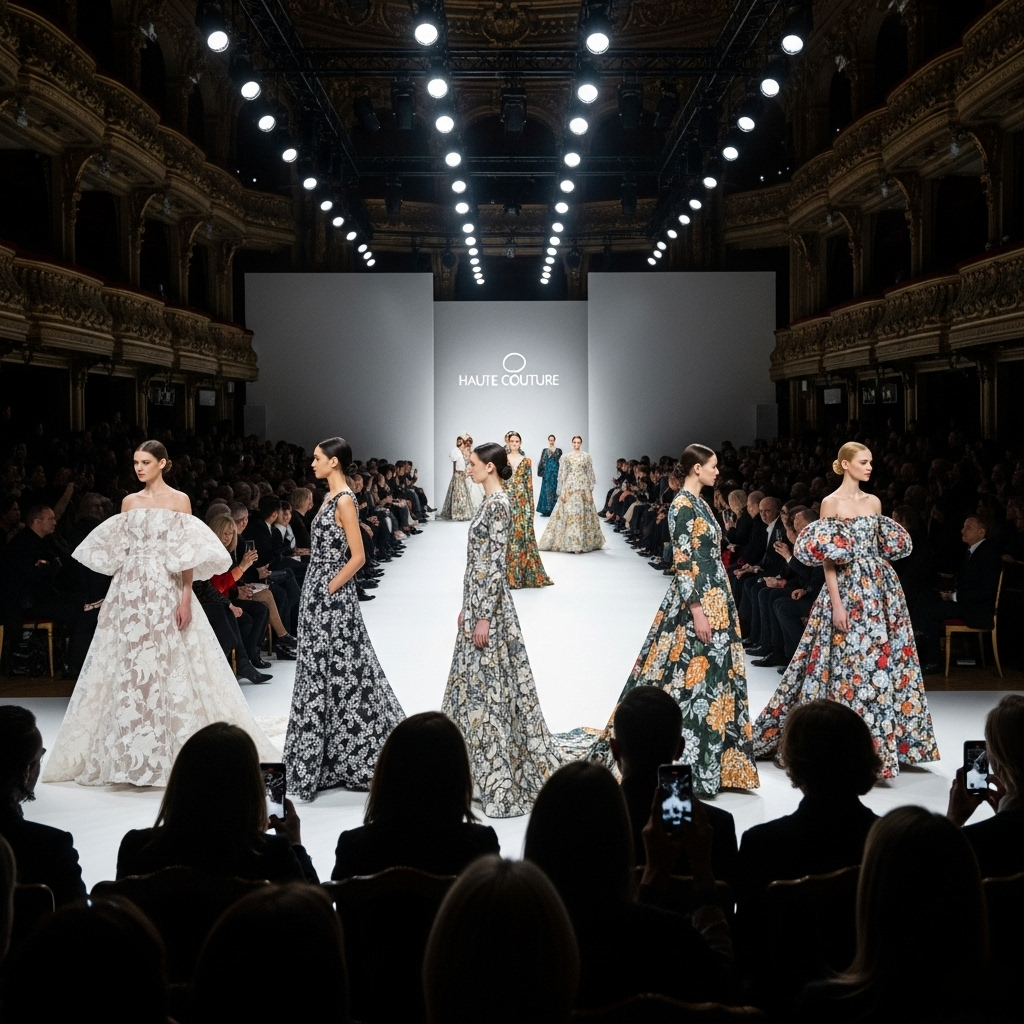Haute Couture. The very words evoke images of shimmering fabrics, intricate embellishments, and runway spectacles that transcend mere clothing. More than just a segment of the fashion industry, haute couture represents the pinnacle of sartorial artistry, a testament to human skill, creativity, and the relentless pursuit of beauty. Its influence, though often perceived as exclusive and inaccessible, permeates the entire fashion ecosystem, shaping trends, inspiring designers, and preserving invaluable craftsmanship. To truly understand fashion, one must delve into the enduring legacy of haute couture.
The origins of haute couture can be traced back to the mid-19th century in Paris, with the visionary work of Charles Frederick Worth. An Englishman who established his fashion house in the heart of the French capital, Worth revolutionized the way clothes were created and consumed. He moved away from bespoke, client-led designs to presenting seasonal collections on live models, effectively birthing the modern fashion show. Worth’s emphasis on exquisite fabrics, impeccable tailoring, and artistic design laid the foundation for what would become the highly regulated and revered world of haute couture.
The Chambre Syndicale de la Haute Couture, the governing body that dictates which fashion houses can officially bear the prestigious “haute couture” label, established stringent criteria that remain largely in place today. These regulations ensure the exclusivity and unparalleled quality of couture garments. To be recognized as haute couture, a fashion house must design made-to-order clothes for private clients, with more than one fitting. They must also have a workshop (atelier) in Paris that employs at least fifteen full-time staff members. Furthermore, each season, the house must present a collection of at least fifty original designs, both day and evening wear, to the Paris press. These rigorous standards guarantee that each haute couture piece is a labor of love, involving hundreds of hours of meticulous handwork by highly skilled artisans.
The ateliers of haute couture houses are veritable sanctuaries of craftsmanship. Seamstresses, embroiderers, feather workers, and beaders, often having dedicated their lives to mastering their specific skills, bring the designers’ visions to life. Techniques passed down through generations are employed to create breathtaking textures, intricate patterns, and flawless silhouettes. The level of detail is astounding – each stitch, each bead, each feather is placed with precision and artistry. This dedication to handcraftsmanship stands in stark contrast to the mass-produced nature of prêt-à-porter (ready-to-wear) fashion, highlighting the unique value proposition of haute couture.
While the clientele for haute couture remains exclusive, its influence on the broader fashion landscape is undeniable. Couture collections often serve as a laboratory for experimentation, where designers push the boundaries of creativity, exploring new silhouettes, materials, and techniques. These innovative ideas, while initially presented in the rarefied atmosphere of the couture runway, often trickle down to ready-to-wear collections, influencing the shapes, colors, and details that eventually find their way into mainstream fashion. Think of the dramatic volume pioneered by designers like Christian Lacroix in the 1980s, or the avant-garde constructions of Elsa Schiaparelli in the early 20th century – these couture innovations left an indelible mark on the fashion vernacular.
Moreover, haute couture plays a crucial role in preserving and promoting traditional crafts. The demand for intricate embroidery, delicate lacework, and specialized fabric manipulation keeps these artisanal skills alive in an era of increasing industrialization. By investing in these crafts, haute couture houses contribute to the cultural heritage of fashion and ensure that these invaluable techniques are not lost to time. The collaborations between couture designers and specialized ateliers often result in breathtaking artistic creations that showcase the extraordinary capabilities of human hands.
Beyond the tangible garments, haute couture also cultivates a sense of fantasy and aspiration. The elaborate runway shows, often staged in opulent settings, transport viewers to a world of beauty and extravagance. These spectacles generate media attention and create a buzz around the brand, ultimately enhancing its image and desirability across all its product lines, including perfumes, accessories, and ready-to-wear. The dream of owning a piece of this artistry, even if unattainable for most, fuels the desire for luxury and influences consumer preferences.
In an age of fast fashion and fleeting trends, haute couture stands as a bastion of timeless elegance and enduring quality. It represents a commitment to artistry, craftsmanship, and the pursuit of perfection. While its direct impact on the everyday wardrobe may be limited, its influence on the creative direction of the fashion industry and its role in preserving invaluable skills are profound. The legacy of haute couture is not just about exquisite clothes; it’s about the enduring power of human creativity and the timeless allure of beauty meticulously crafted. As long as there are those who appreciate the artistry and dedication involved, haute couture will continue to inspire and shape the world of fashion for generations to come. Its influence, like a finely woven thread, is intricately intertwined with the very fabric of fashion itself.


Leave a Comment
Your email address will not be published. Required fields are marked *